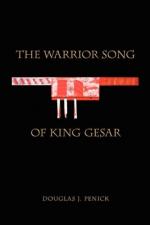|
This section contains 2,613 words (approx. 9 pages at 300 words per page) |

|
GESAR. As is the case with most epic texts—Rāmāyaṇa, Gilgamesh, and King Arthur, for example—little is known of the historical and artistic genesis of the Gesar epic (Tibetan, Gling Ge sar gyi sgrung), a complex and lengthy narrative relating the heroic deeds of the divine king Gesar. The earliest known written version of the epic dates back to 1716, when it was translated—possibly from Tibetan—into Mongolian on the orders of the Manchu emperor. Different versions are attested: the Eastern Tibetan from Khams province (Eastern Tibet); the so-called Amdo Tibetan from a province in northeastern Tibet; the Western Tibetan from Ladakh, an oral version that has affinities with both the Eastern and Amdo versions, though it is shorter than the Eastern one; and the Mongolian one, which boasts a great number of episodes that cannot be found in the other versions. Hunza (northeast...
|
This section contains 2,613 words (approx. 9 pages at 300 words per page) |

|


